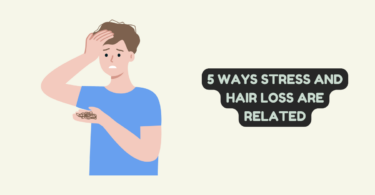
What To Look For In The Best Lumbar Traction Device
If you are someone who suffers from back pain, you know how debilitating it can be. You may have tried various treatments but still haven’t found relief. You may consider using a lumbar traction device if that’s the case.
A lumbar traction device is used to apply traction to the lower back. This can help to decompress the spine and relieve pressure on the discs and nerves.
There are many different lumbar traction devices on the market, so it can be tricky to know which one to choose. This article will provide you with a list of the things to look for in the best cervical traction device.
How To Choose The Best Cervical Traction Device
Features Of The Cervical Traction
The first thing you should check out on any product is the feature. You have to locate the useful features that will come in handy in your needs—but just because a product has tons of bells and whistles doesn’t mean it’s good!
Additional features to consider in the best cervical traction device include the ability of this product’s pressure settings and padding level to be adjusted by you, its portability when traveling, and a carrying case for more effortless mobility. More expensive models offer a wide variety of features, so you can choose the combination that best suits your needs and lifestyle.
Position During Treatment
Pneumatic traction devices are used while lying down, so you need ample enough space to spread out on the floor. Some over-the-door models can be used while standing, but others are designed when sitting or lying. For people who want to remain active while receiving physical therapy, a wearable neck brace can help.
Portability
A home cervical traction device means you can treat your neck pain—wherever you are. Many models are small enough to pack into a suitcase, and some come with carrying cases. Because of this feature, it’s easy for a user to take the traction device when traveling.
Pounds of Pressure
The norm for traction pressure during physical therapy is between 25-45 pounds. For chronically tight muscles that do not respond to lower pressures, it may be necessary to use higher force to stretch them more effectively and provide greater symptom relief.
For less severe disc and muscle compression, a home neck traction device providing 10 pounds or less pressure is likely to be effective. Ask your doctor if you are still determining what pressure level is right for you.
Incline Positions
Traction is a treatment that must be individualized for each patient. In cases where the spine is compressed, an inclined position creates greater intervertebral separations on both sides and relieves people with substantial symptoms. Some home traction devices offer multiple positions, but advanced stationary models position your head at an incline for more effective results.
Fitment
Measuring your neck before buying a traction device is essential, as some will only fit people with smaller necks. Inflatable collars and wearable braces are available in a wider range of sizes. The right fit is essential, so measure your head and neck before ordering the best cervical traction device.
Summary
Treating cervical issues can be a hassle when it involves multiple office visits for physical therapy, leading some patients to forego treatment even when it’s likely to bring them great relief. Many home decompression devices can deliver pain relief and access to therapy in the comfort of your own home.






